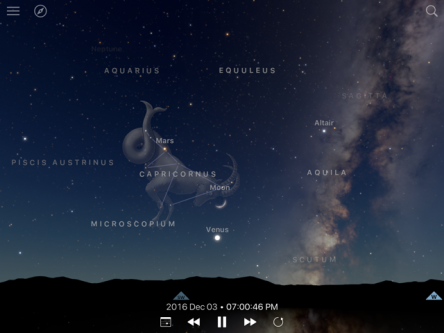
• Dec 3 – Look to the southwest after sunset to see a waxing crescent moon about 6 or 7 degrees above the planet Venus, which is now shining brightly as our “Evening Star”.
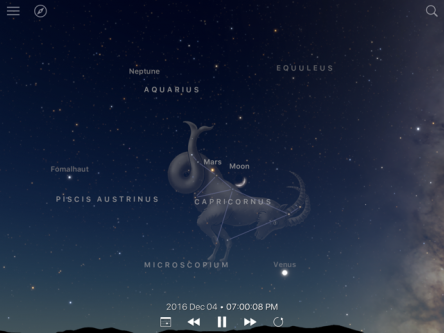
• Dec 4 -The waxing crescent moon is now positioned just 5 or 6 degrees to the lower right of the planet Mars.
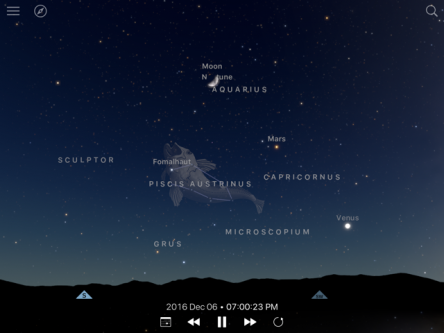 • Dec 6 – Tonight, the crescent moon lies just 0.7 degrees north of the planet Neptune. Steadily mounted binoculars or a telescope with an aperture of 6 inches or more may reveal the outermost planet. Through binoculars Neptune will look like a very bright star and a telescope will show it as a tiny blue disk. However, the glare from the moon may make spotting Neptune difficult. The blue color is a result of the methane in Neptune’s cloud tops, the gas is very good at absorbing redder wavelengths of sunlight while reflecting back the bluer wavelengths.
• Dec 6 – Tonight, the crescent moon lies just 0.7 degrees north of the planet Neptune. Steadily mounted binoculars or a telescope with an aperture of 6 inches or more may reveal the outermost planet. Through binoculars Neptune will look like a very bright star and a telescope will show it as a tiny blue disk. However, the glare from the moon may make spotting Neptune difficult. The blue color is a result of the methane in Neptune’s cloud tops, the gas is very good at absorbing redder wavelengths of sunlight while reflecting back the bluer wavelengths.
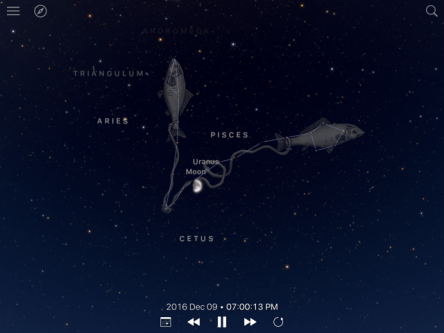
• Dec 9th – The first quarter moon is 3 degrees south of the planet Uranus. The planet Uranus is a rather dim planet and seeing it with the glare of the moon will likely prove problematic.
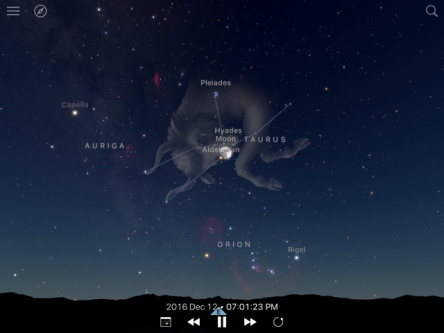
• Dec 12th – At 5:29 PM CST the moon will be at perigee, its closest distance to Earth for the month at a distance of 222,737 miles.
On this same night, the moon will occult the star Aldebaran in the constellation of Taurus the Bull. An occultation is where one celestial object passes in front of another celestial object, thereby hiding it from the view of an observer. Look for this event to begin at around 9:24 PM CST, Aldebaran will reappear at around 10:29 PM CST.
• Dec 13 – Full moon and the peak night of the Geminid Meteor Shower. The Geminids is one of the year’s most productive meteor showers with 50 or more meteor streaks per hour during dark, moonless nights. Sadly, the bright moon will obscure all but the brightest meteors. The greatest number of meteors will occur after midnight, centered at about 2:00 AM CST.
• Dec 21 – The Winter Solstice, the first day of winter, and the northern hemisphere’s shortest day and longest night, officially occurs at 4:44 AM CST. Due to the Earth’s tilt upon its axis and the position of its orbit, the Sun appears to have reached its lowest point in our sky. As the Earth continues along in its orbit, the Sun’s path across our sky will gradually appear to move northwards in the weeks to come.
• Dec 22 – The peak of the Ursid Meteor Shower. This is one of our lesser meteor showers with only about 5 or 10 meteors per hour. Look for the greatest activity between midnight and dawn, a waning moon will interfere during the early morning hours.
• Dec 25 Happy Holidays! At 12:55 AM CST, the moon is at apogee, its greatest distance from the Earth at 252, 196 miles.
• Dec 29 New moon, 12:53 AM CST
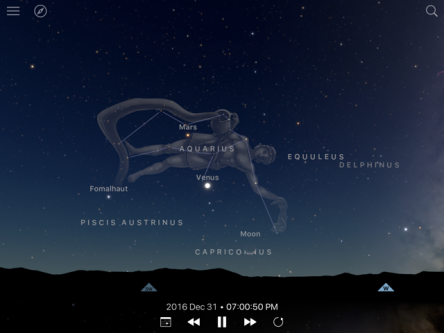
• Dec 31 Happy New Year’s Eve! A splendid conjunction of the planets Mars and Neptune occur tonight. A conjunction is when two astronomical bodies align in our sky, however, this is purely a line of sight effect. During the early evening hours, look for the red planet Mars low in our WSW sky after sunset. The planet Neptune will be less than 11 arcminutes to the north of Mars. Astronomers measure the angular separation of objects in the sky by using degrees. One degree is the distance across your pinky finger helout at arm’s length. Going smaller, astronomers divide a degree into smaller units known as arc minutes and arc seconds. One degree is made up of 60 arc minutes and one arc minute is divided into 60 arc seconds. So, this is a very close conjunction indeed! A 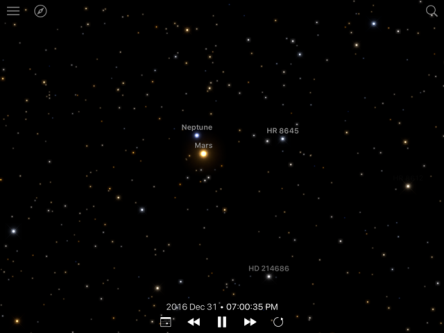 telescope will provide a wonderful view with the blue disc of Neptune contrasting well with the Red Planet.
telescope will provide a wonderful view with the blue disc of Neptune contrasting well with the Red Planet.
